![]()
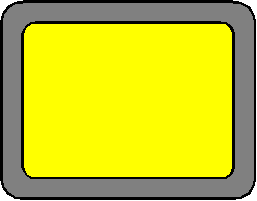 Psychophysical Experiments:
Psychophysical Experiments:This sort of experiment is conducted with the cooperation of the subject, who states whether or not he/she perceives the stimulus. Here the individual colour sensitivity is tested by flashing letters of different colour contrast in comparison to the background (the colours are not calibrated in this example, however). The observer has to read the letters, while his eyes rest on the fixation target. The individual threshold is approached in a stepcase procedure with the computer generating less or more contrasting colours depending on the answer of the observer being right or wrong. Similar experiments can be designed to measure the isochromatic contrast threshold, or the threshold to perceive motion or sudden displacement steps of the image.
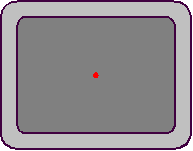
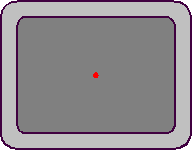 Evoked potentials and evoked fields:
Evoked potentials and evoked fields:Cortical activity, that is brain electric potentials or
magnetic fields, is recorded by means of very sensitive
amplifiers. In the case of magnetic fields the sensors are
usually made of supraconducting quantum interference devices
(SQUIDs) cooled to near absolute zero temperature and placed at
some distance over the scalp without direct contact to the skin.
The stimuli for these experiments have to be repeated many times,
in order that the responses can be averaged to reduce artefacts.
In the example checkerboard patterns are flashing at various
visual fields (full field, circular half fields), and several
levels of black-and-white (isochromatic) or red-and-green
(heterochromatic, but isoluminant) contrast are applied.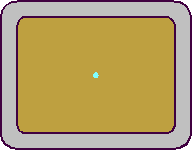
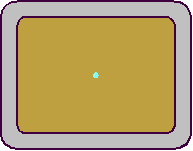 Responses are averaged into different
bins according to the colour and contrast of the stimulus,
according to the stimulated field and to the modality of
stimulation. The latter can be subdivided into pattern ONSET,
pattern REVERSAL and pattern OFFSET stimulation depending on the
position within the sequence of stimuli of one kind. For many
clinical purposes the continuous pattern reversal stimulation is
more practicable, because the rate of stimulation may be higher
with consequently shorter total examination time.
Responses are averaged into different
bins according to the colour and contrast of the stimulus,
according to the stimulated field and to the modality of
stimulation. The latter can be subdivided into pattern ONSET,
pattern REVERSAL and pattern OFFSET stimulation depending on the
position within the sequence of stimuli of one kind. For many
clinical purposes the continuous pattern reversal stimulation is
more practicable, because the rate of stimulation may be higher
with consequently shorter total examination time.
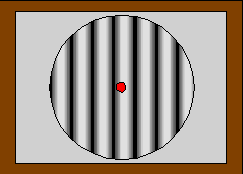 Variety of motion stimuli:
Variety of motion stimuli:In visual motion stimuli the fixation of the eyes is a very critical point. With moving sine wave gratings there is a considerable tendency to move the eyes with the pattern, which in turn will nearly abolish the motion of the retinal image. In the rotating windmill pattern, the eyes can rest comfortably and securely in the centre of the windmill. This kind of stimulus was hence preferred in my own experiments, although before then it was a more unusual stimulus. The start and stop of the rotation are the actual stimuli, of which the retinal or cortical responses are sought for. Among the parameters, which can easily be varied, are pattern contrast, rotation speed (angular velocity), and duration of rotation, or depending vice versa angle of rotation (for example defined as a multiple of the extent of one vane). Please also note the motion aftereffect, a short impression of counterwise rotation following the sudden stop of the windmill, which is best perceived, when the centre has been fixated correctly (click with mouse button to halt). The displayed sample stimulus is of course moving much more stepwise than the real stimulus in my laboratory, due to restrictions of the used JAVA application and the speed of your computer.
![]()
Bernhard Haug |
Research and |
![]()